Entretien avec
Philip Cook
Existe aussi en Version Française

Philip J. Cook is a producer/director/writer/director of photography/FX specialist who has been involved for 25 years in the field of American B-movies. After working for such luminaries as Menahem Golan and Godfrey Ho, he created his independent company to carry out his own personal science fiction movies such as "Despiser", released on DVD in France. Here is the interview of a passionate man, who tells us about the good and hard times of low-budget exploitation cinema.
For better knowledge of the man and his work, you may see his company's website, which includes several of his films' trailers: www.eaglefilms.com
For some of the illustrations, we used 2 FX specialists' websites:
www.moviemonstermuseum.com
John Ellis' website (a close friend of Phil Cook)
Interview conducted by Rico in April 2006.
Since we know little about you in France, could you please tell us about yourself and your beginning in the film industry?
In the 80s, I started out as an animation cinematographer and worked on many of the early MTV IDs. Back then we created everything with miniatures, stop motion and matte paintings old-school EFX technology. At twenty-four, I directed my first sci-fi feature film OUTERWORLD aka STAR QUEST. OUTERWORLD debuted at the Cannes Film Festival and was sold all over the world. I then wrote and directed my second sci-fi feature INVADER -- Menahem Golan was the executive producer. He was so impressed with INVADER, that he commissioned me to write a screenplay called COVERT STRIKE that I was going to direct in Israel starring Michael Pare' and Billy Drago. Unfortunately Menahem's company, 21st Century Films bankrupted and the picture never got made. I then wrote another screenplay called STAR CRUSHERS for Vision Arts--a visual effects/production company in L.A. They also went out of business before the picture got made.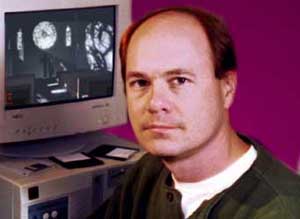
At this point the visual effects industry was moving more and more towards computer animation. Not wanting to be left out, I started teaching myself 3D animation. I wrote the script for NIGHT FLYERS--a story of American women army pilots during World War II that find themselves in the middle of a fantastic adventure. I produced the first ten minutes of the film myself with hopes that the intro could help raise money from distributors. We later developed the concept into a TV series and pitched it to several international distributors in the 90s. It generated a lot interest, but no one was willing to commit to first monies. So NIGHT FLYERS fell by the wayside. It was then that I decided to produce DESPISER the story of an artist to travels to purgatory to rescue his wife from despotic forces. DESPISER was designed specifically for the new digital technologies of independent filmmaking. The goal was to make a fantastic film as inexpensively as possible.
You wrote screenplays for your own movies in the 80's, like Invader or Star Quest, before being an FX technician and a director. Was writing your first choice of career?
I enjoy writing and it's easier to stay in control of your film when you're the author. With my knowledge of visual effects, I knew how to write for a small budget but achieve a big look on screen. I always knew the best EFX films were first and foremost about the characters and story. The EFX are there to serve the story and not the other way around. Although as I look back, I can certainly see I've grown as a writer -- at least I like to think so.
Let's start with your work for other directors. You worked as a director of photography and visual FX creator on several very low budget movies like Nightbeast or The Galaxy Invaders, directed by a passionate sci-fi magazines publisher Don Dohler. What was exactly your work on those films, and what memories do you keep of them?
Wow, you know about those pictures? I was in college when I heard about Don Dohler. He had made the independent low budget feature ALIEN FACTOR. He had shot it in 16mm and actually got it on TV. We were all really impressed. When I learned he was doing NIGHT BEAST, John Ellis, Kent Burton and I jumped at the chance to work on the project. We built miniatures. Kent Burton did a clay animated Night Beast. We shot the whole thing in John Ellis's living room. We created thirty some shots for the opening. It was quite a learning experience. In the end, not all the shots ended up in the film, which was a little disappointing. But from Don's point of view I understand how they may not have matched the style of what he was trying to achieve.

"Metamorphosis, the Alien Factor" was the sequel to a popular low budget movie in the early 80's called "The Deadly Spawn". Despite its lack of money, the movie is generous on creatures and visual effects, and involves a large FX team. What was your part in it? How were the work and the ambiance on the set?
I had known of Ted Bohus for a few years because of DEADLY SPAWN. And Ted knew Dan Taylor who owned the animation company Taylor Made Images in Maryland. Ted and his partners raised quite a bit of money for a low budget film - I believe a million dollars. They shot 35mm; built some pretty amazing sets in a warehouse and had some great prosthetic creatures built by Ron Cole and other talented young guys in New Jersey. Dan Taylor, Alan Hoyt and John Ellis also built one the sets at the end of the film and shipped it to New Jersey for the finale - the big regeneration room. On the live action production, I shot some 2nd unit photography -- inserts of monsters, bloody bits and the like. After the film wrapped, I was Director of Photography on most of the stop motion animation shots. Dan Taylor's crew built beautiful miniature versions of the sets and monsters and Kent Burton and Dan Taylor animated them. Many of the shots still hold up really well. It was a very ambitious effort for the time.
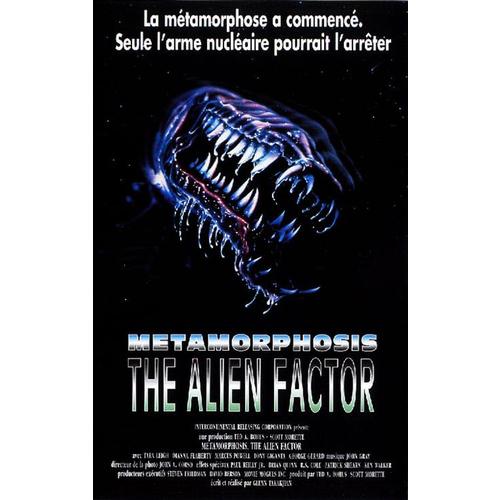

We read that the movie has got some legal problems with its production and distribution. In its end credits, we can read this mysterious line: I haven't got paid enough for this shit. Could you tell us more about it?
I don't know much about the financing side of METAMORPHOSIS. I know Ted had a lot of partners. I never really understood who put up the money or how that worked. There was a big falling out between the producers by the time the production finished. They had made a deal with Intercontinental Releasing, which didn't go well. In this business no one ever gives you a straight answer about how the deals are structured so I don't know the details. Everyone seems to be afraid you're going to learn the truth or steal his or her mojo. It wouldn't surprise me that they have rights problems. That's not unusual. I've got rights problems with INVADER.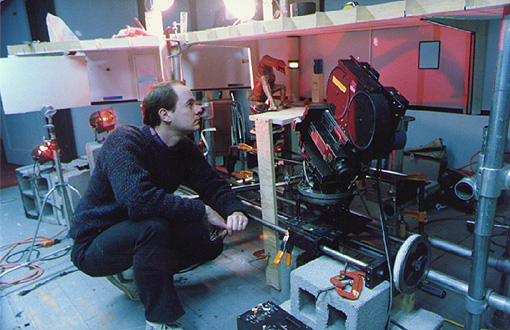 Philip Cook, shooting a sequence frame by frame.
Philip Cook, shooting a sequence frame by frame.
Your also worked as director of photography on a martial art movie, Undefeatable, with Cynthia Rothrock and Don Niam. This film was directed by Godfrey Ho (using the pseudo Godfrey Hall for the movie), a controversial Hong Kong director. How did you get contacted by producer Tai Yim and / or Godfrey Ho/Hall? You said on your website that the story's a little weak, but [you] had a blast working on it! How did the shooting go?
Godfrey Ho had been in the States the year before shooting HONOR & GLORY with Cynthia Rothrock and he wanted to upgrade the look of the cinematography. He had seen INVADER and knew that I could achieve a good look for a very small budget. It was a great experience a mix of Hong Kong and American crew. The stunt monkeys -- Asian martial-artists were amazing -- great guys. The risks that they would take to get the shot sometimes really scared me. I was afraid at times someone might really get hurt. No one ever did. I learned a lot watching Godfrey choreograph. And Tai Yim, the producer, was a real source of inspiration on the set grounded, solid, a real positive force. And of course it was great to have the opportunity to shoot 35mm. I finally had a chance to view the finished film in L.A. at the American Film Market. The images looked beautiful on the big screen. The script and story however were never its strength. Godfrey's emphasis was the action at the expense of character and story.

Godfrey Ho has the reputation not to be a very honest man. Some actors we interviewed, notably Richard Harrison and Bruce Baron, who both acted in some of his films in H.K., told us they got problems with their contracts. Did you have such difficulties with him? Do you know that Godfrey Ho released this movie a few years later in Asia as « Bloody Mary Killer », mixing the original cut with extra, more violent and sexy footage shot in Hong Kong?
That's all news to me. I found both Godfrey Ho and Tai Yim very forthright with me so my experience was very positive. I've lost touch with them over the years.
Outerworld aka Star Quest: beyond the rising moon (1987) is your first movie as a director, and a very ambitious one. How did you manage to write, direct and gather money for this project?
I teamed up with John Ellis. Both he and I had a passion for Sci-Fi films. We loved the work of Gerry Anderson who had produced UFO and SPACE: 1999. We understood how those effects worked. I wrote OUTERWORLD with that visual effects style in mind. I was trying to make an arty sci-fi film BETTY BLUE or RISKY BUSINESS in space. I was pretty immature I don't think I managed to pull it off very well. It was a little long and little pretentious. I've since revisited OUTERWORLD and fixed a lot of things with the new cut. Back in the early 80s, we raised money through private investment, selling $3500 shares for a 1 percent of the picture. It's a painful way to raise money. It took over a year to raise the money and then we had the trivial task of actually producing the picture. It featured dozens of futuristic sets, costumes and miniatures. Almost everything was built from scratch -- something that's unheard for a picture of this budget.
 Phil Cook, John Ellis and Norman Gagnon, the team behind Star Quest.
Phil Cook, John Ellis and Norman Gagnon, the team behind Star Quest.
Despite the little budget at your disposal (about 175 000 $), you always manage to show a maximum of visual effects in your movies. There are models, matte paintings, and photographic special effects. How have you been working on them?
We built some beautiful sets in a small warehouse over one very hot summer. After the live action, we spent a year building a lot of elaborate miniatures. Unfortunately there were many limitations as to what we could achieve photographically. We had no motion control. There was no compositing. No blue screen. No optical printing work. No computer graphics. It was all done in camera old-style. In the new cut, I preserved the best of our miniature effects shots and replaced some of the more awkward shots with digital recreations. I think it's the best of both worlds and smoothes over some of the film's rougher moments.
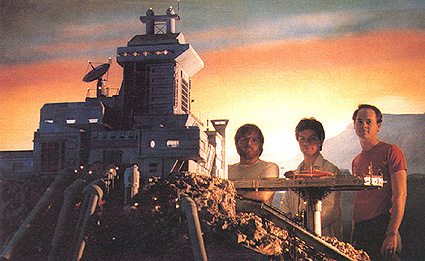
For the special DVD edition, it seems you have added some new computer effects. We read that you made the same to boost and enhance Invader. Is it an artistic choice, an opportunity to do bigger effects with CGI you couldn't afford at that time, or do you think that the original version is too old fashioned for today's audience?
Honestly I felt OUTERWORLD in its original form was unwatchable and unsellable. It's a completely different experience now. Yes, it's still a product of the eighties, but it's got a hipper, brisker pace. It's a pretty radical redo.
INVADER didn't require as much adjustment. The biggest upgrade to INVADER was an air battle above the skies of Washington D.C. The scene is kind of chilling now in the post 911 world of Washington. But Big Harvey--our rampaging stop motion robot--exists untouched. Watching his finale is a little like watching the original KING KONG. You know it's stop motion. You know it's fake, but you love it anyway. I couldn't touch that footage. It still has its cheesy charm the whole underground cavern scene.

Invader is your second movie as a director (a movie we haven't seen in France yet). You describe it as a satirical movie which is very much like an X-Files episode, except it was written in 1987, many years before anyone had heard of Scully and Mulder. Could you tell us a bit more about Invader?
INVADER is the antithesis of OUTERWORLD. Where OUTERWORLD was ponderous, INVADER is brisk. It's a DOCTOR STRANGE LOVE meets DAY THE EARTH STOOD STILL. It's irreverent, flip and pokes fun at the media, the military and UFO mania. I swear Chris Carter, the creator of the X-Files, must have seen it because aspects of it has cropped up in several X-FILES episodes. At its core, INVADER is a buddy picture. An unlikely duo a tabloid reporter and a conservative government agent -- work together to uncover the conspiracy behind mysterious deaths at an Air Force base in Virginia. Aliens are afoot!
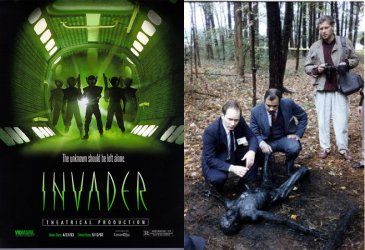
We read that you worked with Menahem Golan as co-producer for this movie. Is it true, and if yes how was your collaboration with this mythic producer?
After OUTERWORLD, we wanted to make a simple movie one not set in the future -- one where we didn't have to build everything from the ground up. So I wrote INVADER. It's set in contemporary Washington. We raised $50,000, half of the budget we felt we needed, and we went out shot half the movie with pretext that we'd be able to raise the rest. Well we shot half the movie and couldn't raise any more money! We stalled for almost a year. Finally I took a rough cut of what did shoot to the American Film Market in L.A. I got rejected by several distribution companies until I met Menahem Golan at 21st Century. He recognized the film's potential and gave me another $125,000 to finish it! It was amazing. He became the Executive Producer and left us completely alone! The original title was THE KILLING EDGE. It was Menahem's idea to rename it INVADER. He loved the final picture. For him it was a win win. He spent a fraction of what he'd normally spend on one of his genre films and got twice the production value. Menahem successfully sold it all around the world Germany, Japan, the U.K. And even though his company bankrupted and I lost my equity share of INVADER, he saved the movie. INVADER never would have been finished with out him. I bear him no ill will.
Your third film as a director is Despiser. The movie is a real technical challenge which mixes real actors with a lot of computer generated sequences. How did you handle such a difficult project, and how long did it take for you to see this project through from the beginning to the end?
We shot DESPISER in 1998. At the time no one was shooting a feature with such a stylized presentation. Since then we've had SKY CAPTAIN, SIN CITY, SPY KIDS and MIRROR MASK. Actors shot on blue screen and composited into computer-generated environments is all the rage now. DESPISER took me two and a half years of postproduction to finish all the effects. It was an experiment with digital technologies. When we started, computer animation was still rare and special. By the time DESPISER was released in 2003, the audience was jaded because 3D was everywhere. Special effects aren't special anymore. I'm still proud of DESPISER, particularly in lieu that it cost $35,000 to produce.

You've made cinematic work for videogames companies. May it be the reason why the purgatory in Despiser seems to have a videogame look?
We've been criticized for the video game look by people wondering why is doesn't look at good as STAR WARS. What we were dealing with was budget, 90's software and the fact that 700 visual effects shots were produced by two people zero budget. I was hoping audience would simply get on board with story, suspend disbelief and enjoy the adventure and creative spirit of the film. Some folks get it, some don't.


Despite the fact most of them are totally unknown, the cast in Despiser is very convincing. How did you recruit them? Was it difficult for them to act with all the CGI?
Thanks. It was difficult finding good talent in the Washington area and even more difficult scheduling around their availability since most weren't full time actors. Ironically I wrote DESPISER before INVADER, but I was holding out on the script for a bigger budget. In the end I produced it with my own money for a fraction of what we spent on either of my first two films. We never secured a star and simply casted local.
As far as directing actors on blue-screen, I don't think it's as difficult as people think. Actors have vivid imaginations. It's really more of a concern dialing up or dialing down their performances to match the scale of the effects composited later month later. The other tricky part is keeping everyone's eye-line consistent to where the effects happening.

You plan to turn Despiser into a television series. Is it on its way?
Unfortunately not at this time. If I was more connected with money and TV executives, I think DESPISER could make a great series. Redemption. Adventure. Other worlds. Varying levels of purgatory. Righting the sins of one's past. The concept is timeless. Maybe one of my kids will make decades in the future.

You are doing most of the work on your movies: producer, writer, director, FX technician and even some voices. Is it a choice or only due to financial constraints? Would you do so if you had more money, or is it a way to have total control on your films?
I end up doing so much on my films simply because I haven't had the money to hire skilled crew. I'm reasonably good at a lot of things. I can shoot. I can light. I can edit. I can build sets. Mix audio. Blah. Blah. Blah. Clean the actor's bathroom too. But it can be pretty overwhelming trying to carrying the burden of these complex productions by yourself, particularly when it's your money on line. When I do commercial production, it's such a luxury. I have a DP (Director of Photography), a gaffer, a production manager -- talented people dedicated to one job. The commercial shoots feel like a vacation. All I have do is concentrate on story. Ultimately that's all I'm really interested in. Telling a story. Making an emotional connection with characters and the viewer. Everything else is merely a means to achieve that. So would I like to have more skilled crew on my productions? Absolutely!
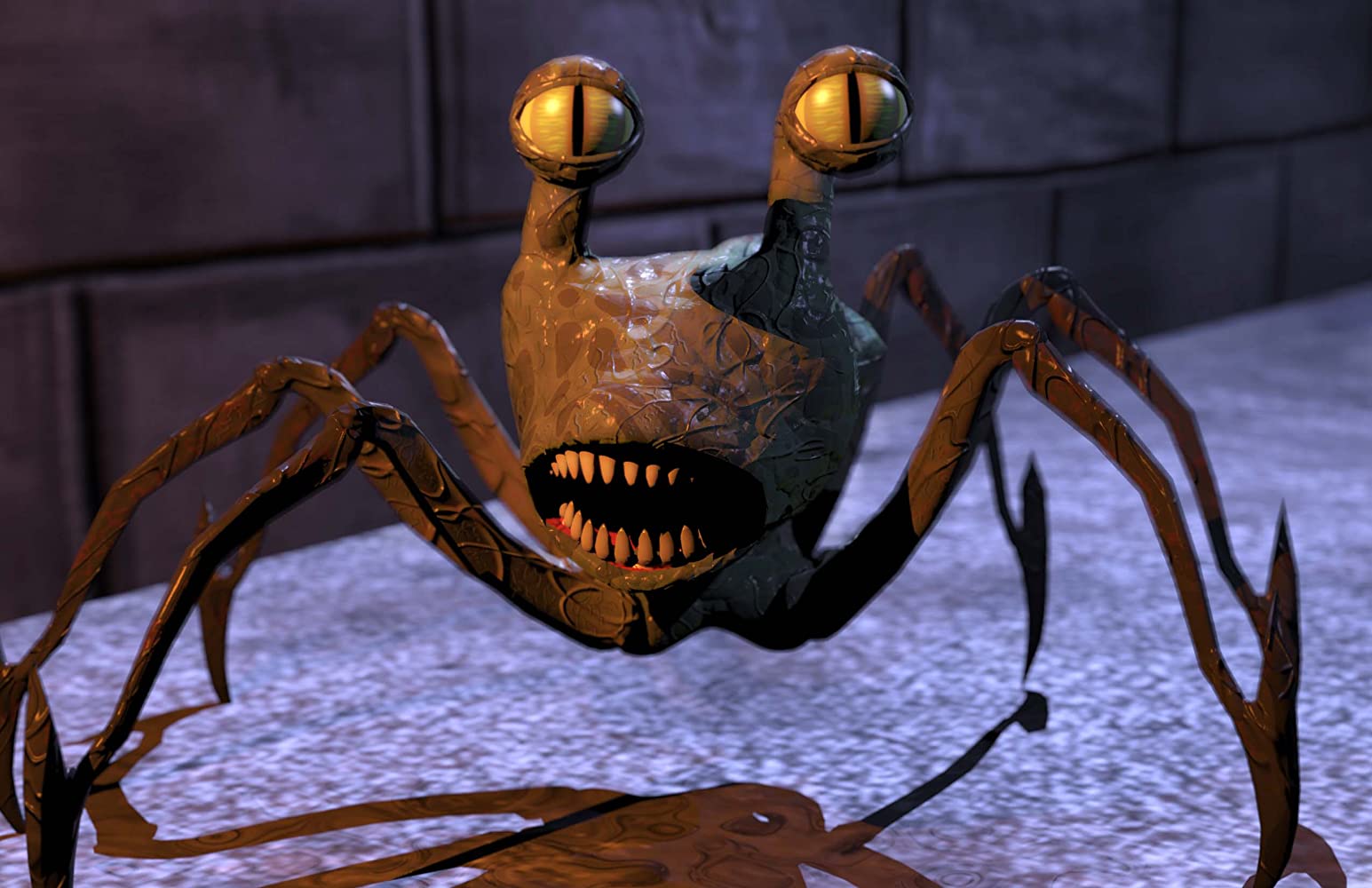
Is it easy to distribute your movies in the U.S? How has the market, for small independent productions like yours, evolved from the 80's to nowadays?
It's very hard to get films distributed in the U.S. and is getting harder every year. It's very cast driven and as the Sci-Fi Channel told me on DESPISER, my films have no promotable cast. DESPISER was reasonably successful, but if I had finished in 2002 instead of 2003, it was have been even more successful. The market is saturated with media now. Every year seems to be getting worse. Even though DESPISER has been sold to most major markets, I'm not sure I'd have the guts to try and make another film like DESPISER again today. I think I've got to move into bigger budgets to compete. I've got to try to get a name that means something the international or genre markets.
You seem to be an « East Coast man ». You worked especially between Baltimore and Norfolk in the Washington DC area. Is it difficult to be in the movie industry without living in L.A.?
I think it's difficult to be in the movie business anywhere. There are so many people competing for the same dollars, distributors and attention in a media saturated market place. In the movie business, you can't make a living but you could possibly make a killing. I stay in Washington because my family is here -- because I'm relatively unique here and because my non-movie clientele are here. Philip Cook, camera and assault rifle in hands, on the set of "Malice", his new franchise.
Philip Cook, camera and assault rifle in hands, on the set of "Malice", his new franchise.
What are your projects for the future?
I've got three un-produced scripts in various levels of play at this point. The one I think has the strongest hope of actually getting made is a revenge story with sci-fi overtones. It's an adventure set in the world of pornography, terrorism and biotechnology -- a much broader, darker palette than I've worked in before. The script has been well received. Time will only tell how it finally manifests itself.

